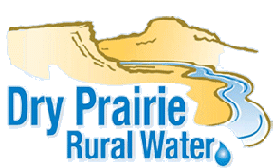The Benefits and Uses of Dry Prairie Rural Water
The regional water project will address the serious water problems facing the region. Ground water in northeastern Montana contains concentrations of sulfates and total dissolved solids that exceed the safe drinking water guidelines set forth by the EPA. These contaminants affect the taste and general acceptability of water. More than 80% of the private systems on the Fort Peck Reservation have documented nitrate levels above safe drinking standards. The region's ground water also suffers from contamination resulting from oil and gas development. High levels of iron and manganese are additional water quality issues.
Many rural residents cannot use their existing water source without extensive treatment. Reverse osmosis, filtering, distilling or softening will not be necessary when using treated Missouri River water. Offensive color, odor, and taste will be eliminated. Additional cost savings include extending the usable life of faucets, hot water heaters, appliances, and clothes. Eliminating the need for bottled water, water softening, and excessive cleaning supplies will also reduce water related expenses.
Some of the economic benefits are:•Construction employment of 1,500 man years which equates to over $50 million of income over the ten-year construction timetable. Over and above labor expenditures, the contractors will purchase fuel, equipment, parts, and supplies. Additional housing, food, clothing, utilities, and services from local providers will be necessary.
•Operation and maintenance of the fully constructed project, both on and off the Reservation, will employ 25 people and have annual expenses of $3.5 million.
•High quality water will enhance the processing abilities of agricultural ventures in the area, such as crop processing plants.
•Livestock income will increase over the 50-year life of the project by $11 million, with an additional 30 pounds of livestock weight at sale time derived from an improved water quality.
•$6 million in water softening costs and $4 million in bottled water use will be saved over the life of the system.
